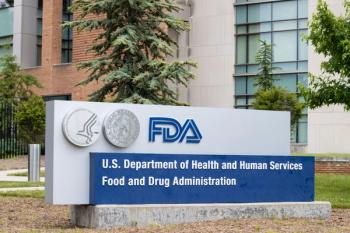
Dancing May Halt Progression of Motor, Nonmotor Symptoms in Parkinson Disease
Patients with Parkinson disease who participated in weekly dance training with music exhibited no decline in motor function and motor or nonmotor experiences of daily living across a 3-year span.
Dancing with music may halt the progression of motor symptom burden and adverse experiences of daily living in people with
As the fastest growing neurodegenerative condition worldwide, PD is characterized by a heterogeneous disease course that includes both motor and nonmotor symptoms. Moreover, the progressive nature of the disease can lead to worsening of these symptoms, explains senior study author and principal investigator Joseph DeSouza, PhD, associate professor in the Department of Psychology at York University, because even mild motor impairment can have a lasting effect on daily functioning.
“Many of these motor symptoms lead to isolation because once they get extreme, these people don't want to go out,” said DeSouza, in a
In recent years, significant improvements in motor and nonmotor symptoms have been observed in nonpharmalogical exercise strategies, such as
"Dance is so complex; it's a multisensory type of environment," said Bearss. "It incorporates and stimulates your auditory, tactile, visual, and kinesthetic senses, and adds an interactive social aspect. Regular exercise does not offer these aspects. There's so much more to dance."
They conducted a longitudinal study of patients with mild to moderate PD who took part in a weekly 1.25-hour dance class for 3 years (n = 16; mean [SD] age, 68.7 [8.4] years; 11 males) that provided both aerobic and anaerobic exercises. Participants learned choreography for an upcoming performance that began with live music in the seated warm-up, then barre work, and finally movement across the floor.
Furthermore, the classes were recorded, with participants assessed via Movement Disorders Society Modified Unified Parkinson's Disease Rating Scale (MDS-UPDRS) and a subsection of the
In their findings, patients of the intervention group exhibited no motor decline across the 3-year interval compared with those of the reference group who showed an expected motor decline (P < .01). No significant declines were also observed for nonmotor aspects of daily living, motor experiences of daily living, and motor complications in the intervention group.
Notably, a significant group of both populations who train weekly were identified by days interaction to have less motor impairment (mean [SD], 18.75 [7.82]) than patients of the reference group who do not train (mean, 24.61 [9.67]) over time (P < .05), as measured by the MDS-UPDRS.
"Currently there is no precise intervention with PD and usual remedies are pharmacological interventions, but not many options are given for alternate exercises or additional interventions to push their brains," said DeSouza. "Hopefully this data will shed light on additional therapies for this group and be used in the treatment process. There may be changes in the brain that occur with dance with music, but more research is necessary."
Reference
Bearss KA, DeSouza JFX. Parkinson’s disease motor symptom progression slowed with multisensory dance learning over 3-years: a preliminary longitudinal investigation. Brain Sci. Published online July 7, 2021. doi:10.3390/brainsci11070895
Newsletter
Stay ahead of policy, cost, and value—subscribe to AJMC for expert insights at the intersection of clinical care and health economics.








































